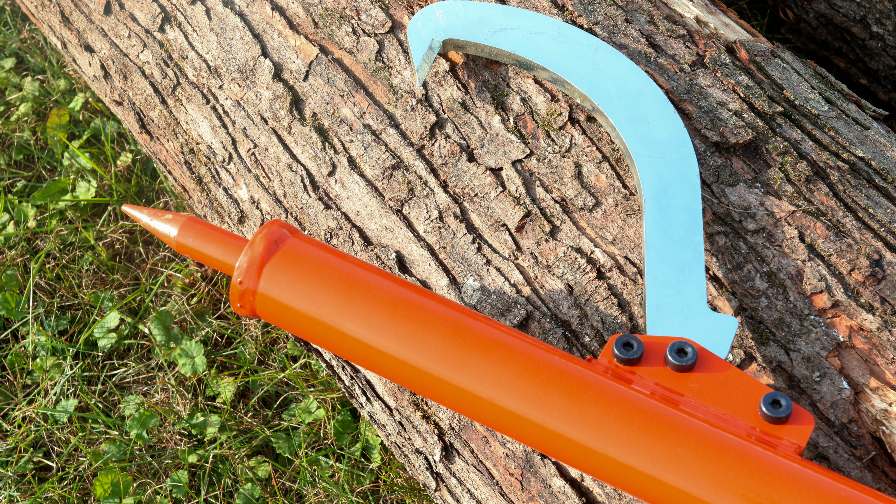How to Choose a Cant Hook vs. Peavey
By Ryan Moore, Wood-Mizer

Logging tools are essential items for any sawyer, forester, or landowner. Two of the most common logging tools are the cant hook and log peavey that are used to move, roll, lift, pivot, and position logs around your sawmill, woodlot, or log splitter. While both cant hooks and peaveys allow for rolling logs where you need them, share the same handles for leverage and swinging hooks for gripping logs, they are not exactly the same. So, what are differences between a cant hook vs. peavey?


What is a Log Peavey?
The biggest difference between a cant hook vs. peavey is at the end of the logging tool. A peavey includes a pointed tip at the end which is designed for separating logs, sticking in the ground for sliding or leveraging logs, and easy storage access. A cant hook does not include a pointed tip.


What is a Cant Hook?
A cant hook has extra teeth or an extra toe hook on the end of the handle to provide a second biting edge for a better grip on the log for moving and turning. Both cant hooks and peaveys provide the same function and will help you roll your logs where you need them.
The longer cant hooks and peaveys provide more leverage for moving heavier and larger logs, while the smaller cant hooks or peaveys can be useful for handling logs that are elevated on equipment such as a sawmill or log splitter. At least two cant hooks or log peaveys are recommended for basic log rolling tools.
Wood-Mizer log peaveys and cant hooks are both durable and long-lasting logging tools and are built in the USA with hardened steel handles and hooks. In addition, a comfortable rubber grip improves log handling control and safety by preventing slipping. Give yourself some leverage and move logs with a Wood-Mizer steel log peavey or cant hook!
Logging tools are essential items for any sawyer, forester, or landowner. Two of the most common logging tools are the cant hook and log peavey that are used to move, roll, lift, pivot, and position logs around your sawmill, woodlot, or log splitter. While both cant hooks and peaveys allow for rolling logs where you need them, share the same handles for leverage and swinging hooks for gripping logs, they are not exactly the same. So, what are differences between a cant hook vs. peavey?

What is a Log Peavey?
The biggest difference between a cant hook vs. peavey is at the end of the logging tool. A peavey includes a pointed tip at the end which is designed for separating logs, sticking in the ground for sliding or leveraging logs, and easy storage access. A cant hook does not include a pointed tip.

What is a Cant Hook?
A cant hook has extra teeth or an extra toe hook on the end of the handle to provide a second biting edge for a better grip on the log for moving and turning. Both cant hooks and peaveys provide the same function and will help you roll your logs where you need them.
The longer cant hooks and peaveys provide more leverage for moving heavier and larger logs, while the smaller cant hooks or peaveys can be useful for handling logs that are elevated on equipment such as a sawmill or log splitter. At least two cant hooks or log peaveys are recommended for basic log rolling tools.
Wood-Mizer log peaveys and cant hooks are both durable and long-lasting logging tools and are built in the USA with hardened steel handles and hooks. In addition, a comfortable rubber grip improves log handling control and safety by preventing slipping. Give yourself some leverage and move logs with a Wood-Mizer steel log peavey or cant hook!

